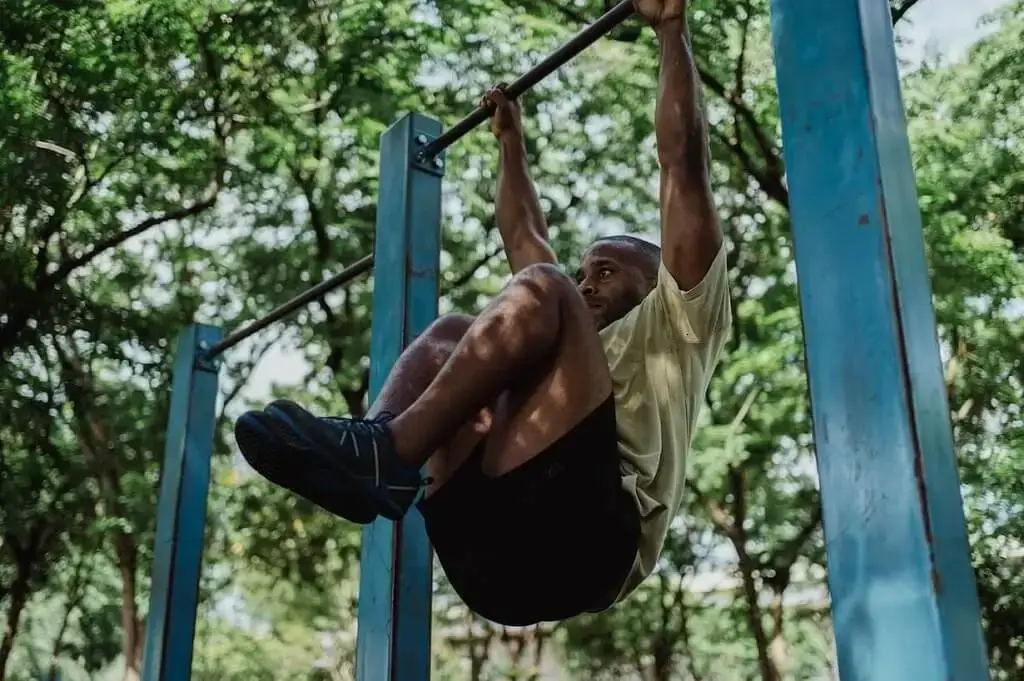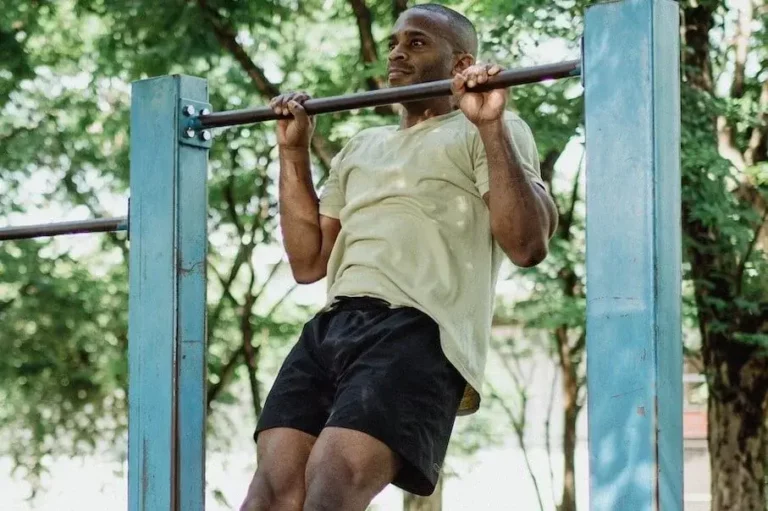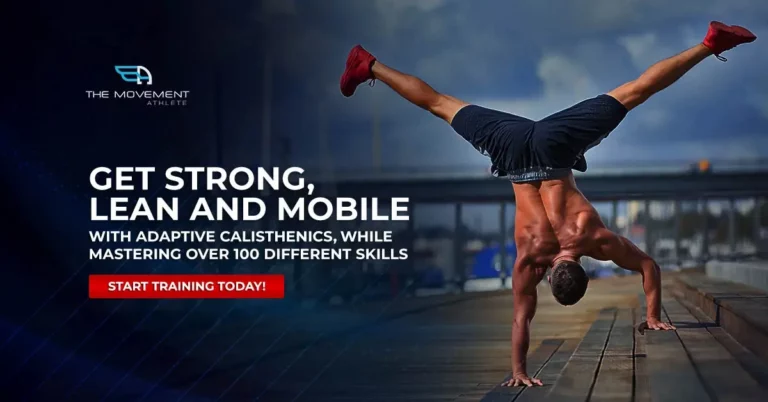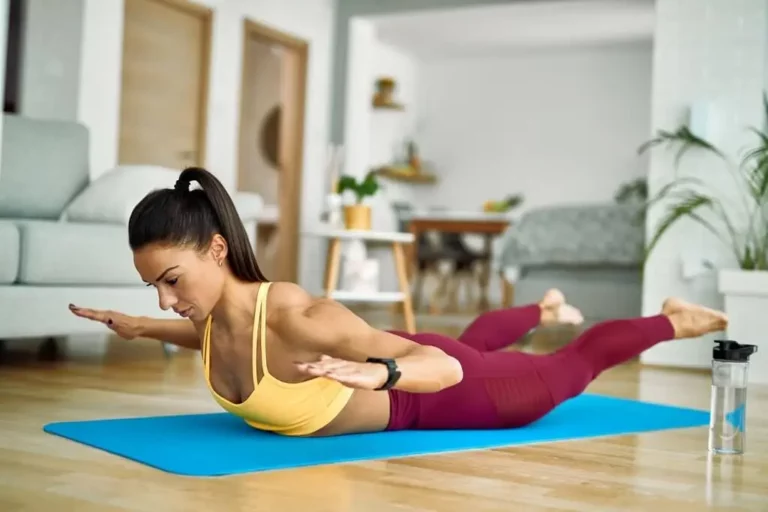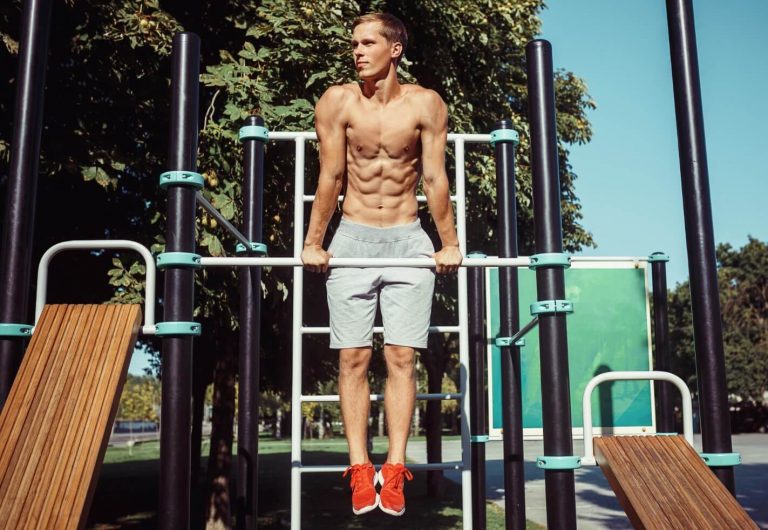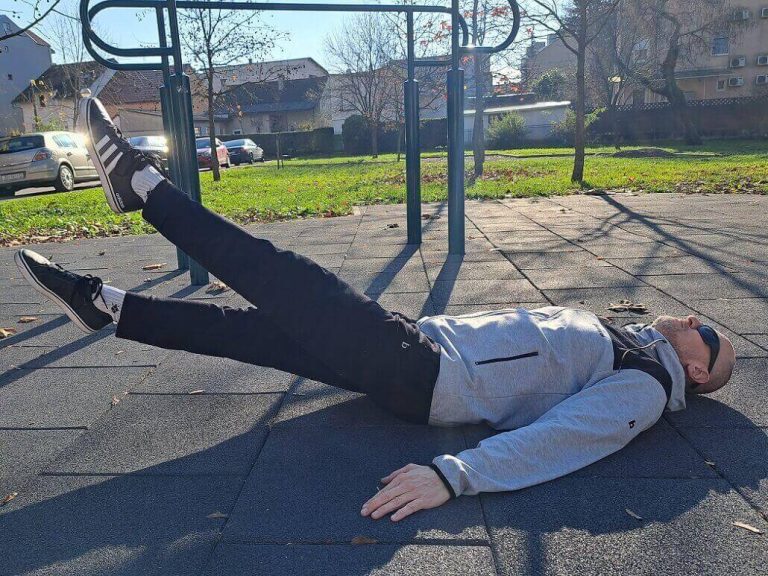Hanging Knee Raises – Great For Hip Flexors And Core
Hanging knee raises are great for building your abs and hip flexor strength. You will be hanging from a pull up bar and raising your knees up.
Sounds pretty easy. But, there are some nuances to keep an eye on if you want to do it correctly.
Hanging knee raises are great for increasing the strength needed for hanging leg raises. Both skills are part of front lever progression.
The main benefits of hanging knee raises
Hanging knee raises are a popular skill that provides several benefits:
- Building strength and mobility of hip flexors: Opposing the common belief this exercise will primarily work your hip flexors, not your abs. This makes it a great choice for building hip flexor strength and mobility.
- Building abdominal muscle strength: As mentioned above, this is predominantly a hip flexor strengthening skill. But, if done correctly this move can also build your abs.
- Improved grip strength: To perform this move you have to be able to hang on the pull up bar long enough. Without any special additional effort, this will help you build your grip strength.
- Improved overall athletic performance: This move will increase the strength of your midsection. This will help you with other exercises and lead to better athletic performance in any sport.
Hanging knee raises muscles worked
This skill will primarily target your hip flexor muscles. If you concentrate on lifting your butt at the end of the move, it will also work your abs. Those are the primary movers in this exercise. Other muscles will provide help and stability.
Hanging knee raises muscles worked:
Primary
- Hip flexors
- Quads
Secondary
- Forearms
- Deltoids
- Abs
- Obliques
How to do hanging knee raises
Positioning
Grab a pull up bar with your palms facing away from you. Your hands should be a bit wider than the shoulder width. Hang freely without touching the ground with your toes pointed down.
Of course, if you have access to a high enough bar to hang from. If a pull up bar is lower it will limit your range of motion and reduce the effects of this move.
Upward movement
The first part of this move is raising your knees up towards your chest. To start, lift your knees up slowly by bending them at your hips and knees. Keep on lifting your knees as far as you can. So far, you were working your hip flexors.
When you can’t lift your legs any further, there is a small additional move you should do to start working your abs.
Lift your butt a bit forward and up. This small move at the end will help you build your abs.
If you do this correctly, you can easily add this same little move to your leg raises. If you incorporate it at this stage, you will progress more rapidly to toes to bar.
Downward movement
To get back to a starting position, lower your butt first. Now, start lowering your legs. You lower your legs bent at your knees. Start to straighten your legs as you approach the end of the move.
Concentrate on doing the lowering part of the move slowly. This is the crucial part of this exercise and one that is the most important for muscle strengthening and growth.
Keep your toes pointed throughout the exercise and your body tensed. Keeping your body under tension and your toes pointed will help you reduce swinging. This will make this move the most efficient.
Repeat those movements for reps.
Common mistakes
Mistake 1 – Using momentum to lift your legs
Mistake:
If you miss hip flexor and abs strength, you may turn to cheating to be able to do a few reps of hanging knee raises. When you feel you use momentum to lift your legs up, you are not reaping the full benefits of this move. When you lift your knees slowly and add a small butt rising motion at the end you will be reaping all the benefits this exercise is offering.
Correction:
To do this exercise without using momentum, you should rather return to the floor. Do a few workout sessions doing laying leg raises to improve the strength of your hip flexors and abs.
After a few weeks, try hanging knee raises again to see if you can do them slowly and with control.
Mistake 2 – Swinging without control
Mistake:
If you find you are swinging, especially when you lower your legs down and straighten them, you are suffering from this mistake. This will make you lose energy and you will be able to do fewer reps as a result. You are also missing the opportunity to improve the strength of your shoulders, your core, and your arms. Those muscles are the ones that prevent swinging if you let them.
Correction:
To reduce the swinging and reap all the benefits, you should concentrate to keep your body still while hanging. If you think about starting position as a hanging hollow hold with your entire body rigid, this is a great way to reduce the swinging.
Mistake 3 – Missing the opportunity to work your abs
Mistake:
Mostly, people are just lifting and lowering their knees and think they are doing hanging knee raises. Without adding the small butt raising move at the end of the upward motion, they are missing the opportunity to work their abs.
Correction:
Take special care to lift your butt a bit forward and up at the end of the upward motion. This is the only part of the move that will work your abs. One thing is concentrating on doing this small move. The other is having the strength to pull it off. If you still miss strength, move back to the floor and do laying leg raises. When you do laying leg raises for a few weeks, try to do hanging knee raises with all their bells and whistles.
Progression
When hanging knee raises are a bit too hard for you, there are other skills you can benefit from. Those moves will help you increase strength where you need it. If your hip flexor and abs strength is the limiting factor, there are a few skills from front lever progression to help you progress:
If the hanging part is what makes you struggle, you can incorporate a few hanging exercises from muscle up progression into your workouts. Those skills will help you increase your grip strength:
When you increase the strength of your hips flexors, abs, and grip, you will be able to pull off this exercise.
If hanging knee raises are easy for you, you can move on with harder skills from front lever progression. Here are a few moves that might be interesting to try:
Key takeaways
Hanging knee raises are great for building your hip flexor and abs strength. But only if done correctly.
To be able to pull it off, you will need to build your hip flexor, abs, and grip strength slowly.
The strength you build with this move will be well used in other skills and progressions.

